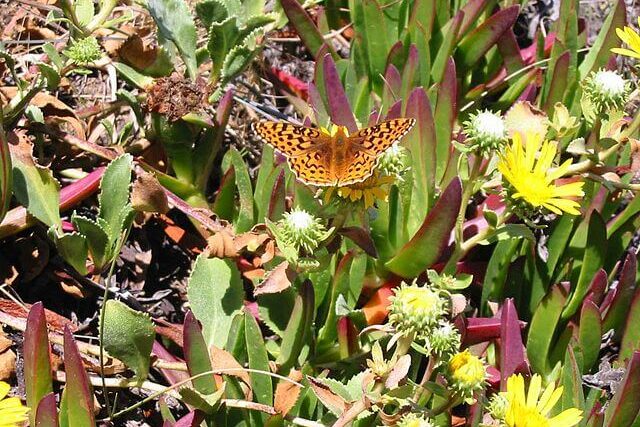
New analysis has revealed that the risk of extinction for species globally is much higher than previously estimated, with two million species now in jeopardy, double the UN’s earlier assessments.
While the decline of plant and vertebrate species has been well-documented, uncertainty has surrounded insect populations. The UN’s tentative estimate in 2019 suggested that 10% of insects were threatened, but recent data challenges this, indicating a much higher proportion facing extinction. Given the abundance of insect species, this doubles the overall count of endangered species globally.
Lead researcher, Axel Hochkirch, from the Musée National d’Histoire Naturelle in Luxembourg, said: “What our study does is really highlight that insects are as threatened as other taxa. And because they are the most species-rich group of animals on our planet, this is really something which should be addressed.”
The difficulty in understanding the status of global insect populations arises from limited data, despite invertebrates comprising 97% of all animals. Within this group, insects represent approximately 90% and play crucial roles in ecosystems by pollinating crops, recycling nutrients, and decomposing waste. “Without insects, our planet will not be able to survive,” Hochkirch said.
The analysis focused on European species listed on the International Union for Conservation of Nature’s red list of threatened species, considered the most comprehensive source of information on species at risk. The findings indicated that a fifth of European species are at risk of extinction, including 24% of invertebrates, 27% of plants, and 18% of vertebrates.
Extrapolating these percentages globally led to the alarming estimate of two million species facing extinction. Apart from insects, the estimates for other species remained consistent with those provided by the UN’s Intergovernmental Science-Policy Platform on Biodiversity and Ecosystem Services in 2019.
“This comprehensive analysis of 14,669 continental red list assessments for European animal and plant species suggests that 2 million plant and animal species are threatened with extinction,” researchers said.
UN representatives declined to comment on the study itself. Anne Larigauderie, executive secretary of Ipbes, said the second Ipbes Global Assessment Report is due in 2028, and it was “likely that the estimates and messages from the first Global Assessment Report will be updated and augmented”.
“It is perhaps most important to remember that whether the figure being used by policy- and decision-makers is 1 million or even more – the urgency and priority of the global biodiversity crisis remains,” Larigauderie said. “We are losing biodiversity and nature’s contributions to people at rates never before seen in human history.”
Human activities are identified as the primary drivers of these declines. The expansion of agriculture, resulting in the loss of natural habitats, stands out as the most significant factor, followed by overexploitation of natural resources, pollution, and residential and commercial development. The urgency of addressing these threats is underscored by the escalating risk to global biodiversity and ecosystem stability.
The paper said: “The finding of agricultural land-use change as a major threat to biodiversity has often been reported. However, our analysis is the most comprehensive and unequivocal to date reaffirming the magnitude of the impact of this threat at a continental scale.”
Hochkirch said: “This study shows we have a very high proportion of species which are threatened with extinction, but we can do something about it.” He highlighted the effectiveness of conservation efforts, particularly the increase in large predators across Europe, such as wolves, lynx, bears and white-tailed eagles. He added: “We see whenever conservation action is taking place, these improvements happen.”
——————————————————————————
At Natural World Fund, we are passionate about stopping the decline in our wildlife.
The decline in our wildlife is shocking and frightening. Without much more support, many of the animals we know and love will continue in their decline towards extinction.
When you help to restore a patch of degraded land through rewilding to forests, meadows, or wetlands, you have a massive impact on the biodiversity at a local level. You give animals a home and food that they otherwise would not have had, and it has a positive snowball effect on the food chain.
We are convinced that this is much better for the UK than growing lots of fast-growing coniferous trees, solely to remove carbon, that don’t actually help our animals to thrive.
This is why we stand for restoring nature in the UK through responsible rewilding. For us, it is the right thing to do. Let’s do what’s right for nature!
Donate today at https://naturalworldfund.com/ and join in the solution!

